-
Car Reviews
- All reviews
- Midsize SUVs
- Small cars
- Utes
- Small SUVs
- Large SUVs
- Large cars
- Sports SUVs
- Sports cars
- Vans
Latest reviews
- Car News
-
Car Comparisons
Latest comparisons
- Chasing Deals
Unconventionally styled and enticingly priced, Kia’s ‘smedium’ sedan appears to make sense in mid-grade Sport trim. But does it deliver?
To date, in a short five months since its debut, we’ve deep-dived in Kia’s new K4 small-ish four-door in full garage review and dissected its similarities and differences to its technical twin-under-the skin, the Hyundai i30 Sedan.
And on both occasions, it’s been the turbocharged, fully independently suspended flagship GT-Line variant.
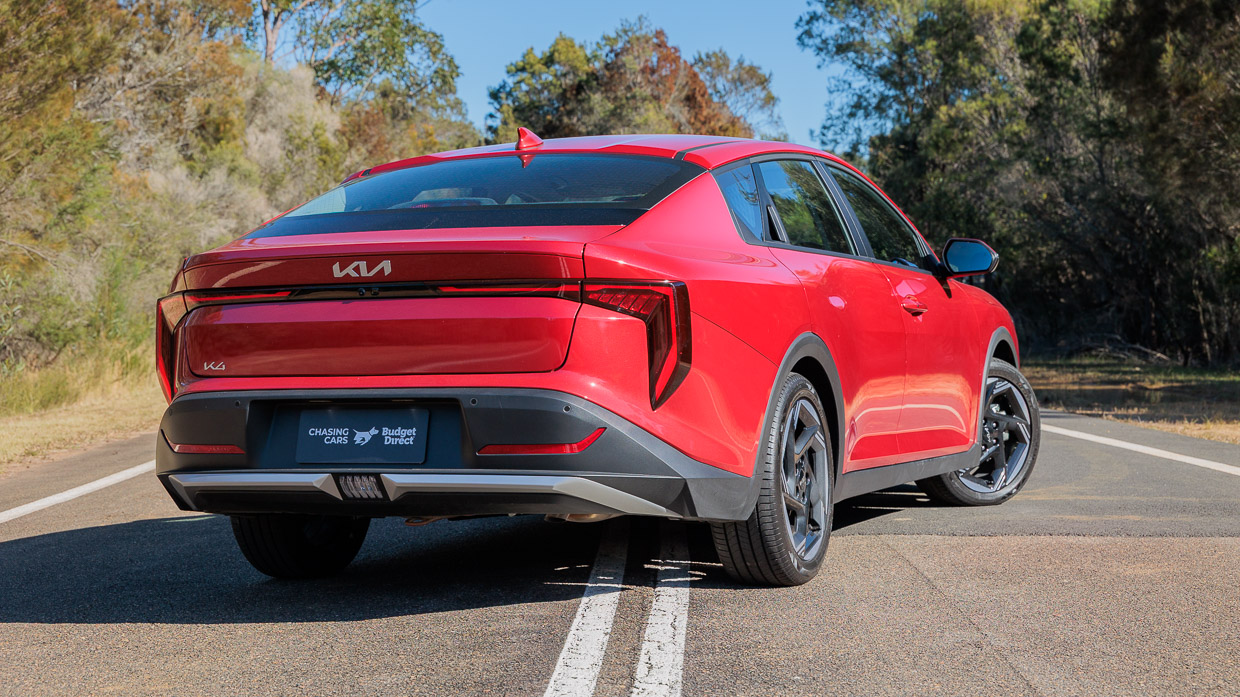
But it’s fair to surmise that, in essence, the larger and more adventurously styled replacement to Cerato’s two-decade tenure as Kia’s staple small sedan (and hatchback) is more accurately represented in its four lower-grade choices: S, S with Safety Pack, Sport and Sport+.
With all due respect, the K4 is, like Cerato before it, a price-lead value proposition.
A well-worn Korean formula that essentially blends pedestrian powertrain and chassis DNA with good presentation, appealing design and smart packaging.
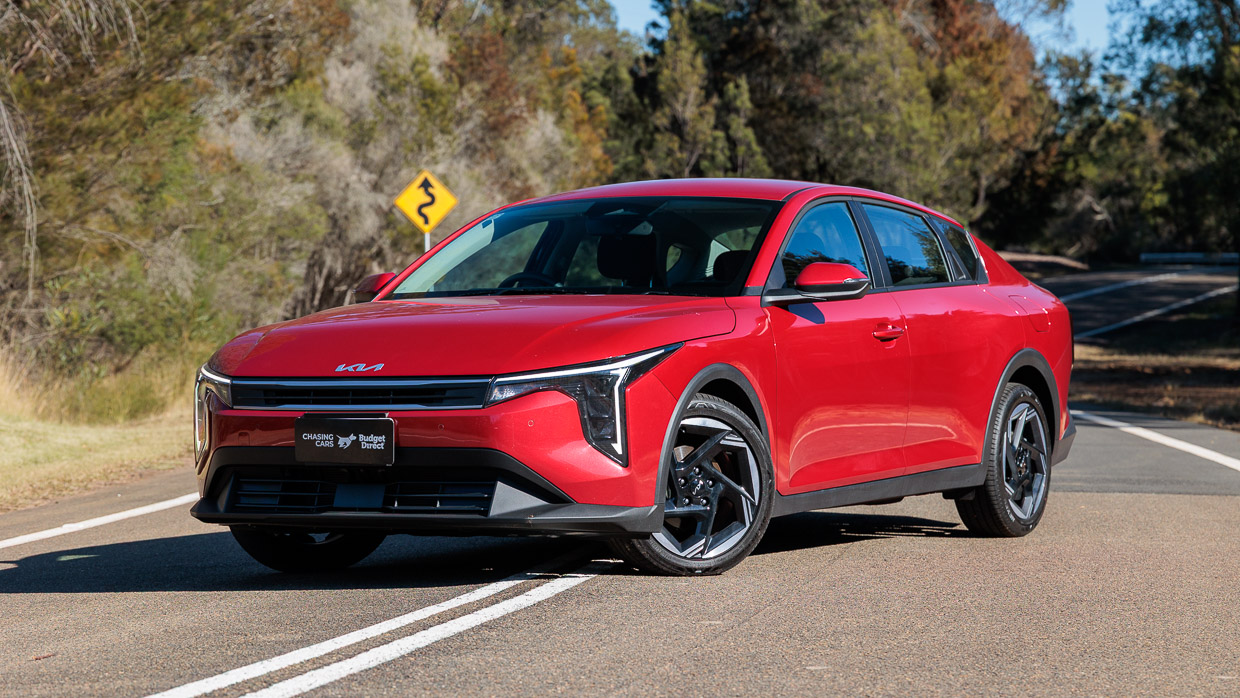
It’s a thrifty, family-friendly solution for those who don’t want an SUV; a safe and capable device for drivers young or old. It’s a no-brainer ride share option or uncomplicated (and hopefully dependable) rental car candidate.
Which is why 75 percent of the K4 line-up has naturally aspirated power and simple torsion beam rear suspension.
Enter the Sport here on test. At $35,190 list, its the K4 mid-ranger sat two up from the base S-grade doldrums, one under Sport+ excesses, and on paper perhaps the most pragmatic choice.
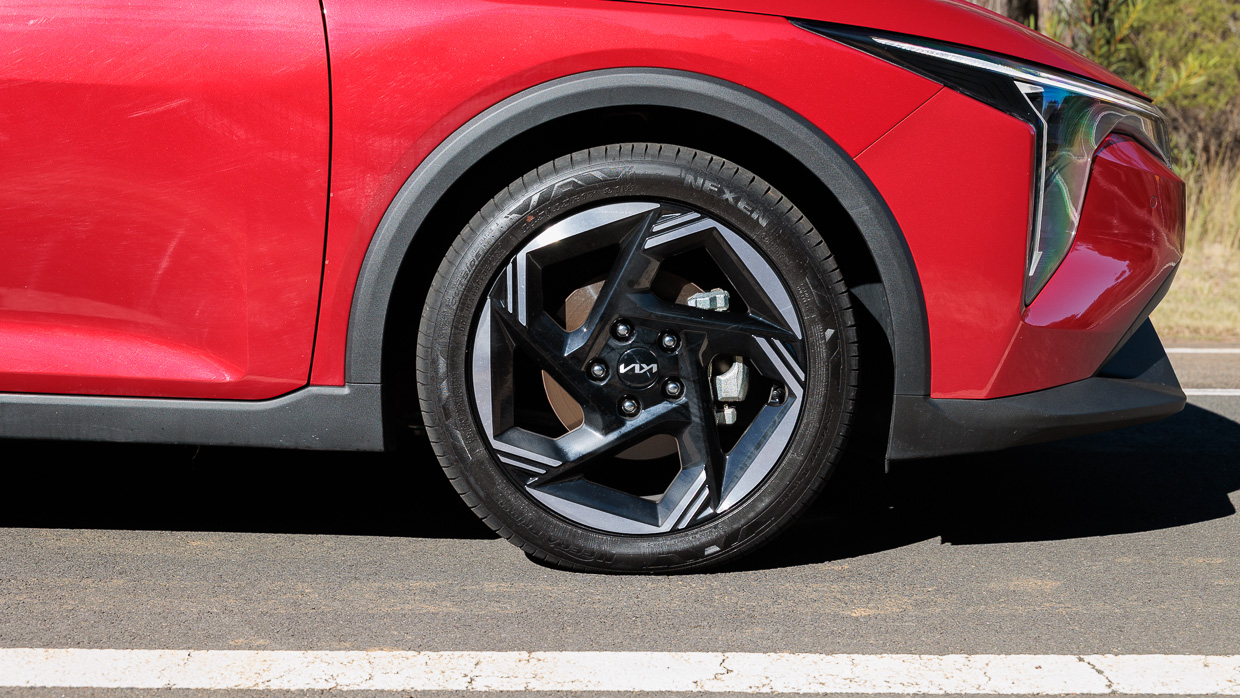
Clearly buyers should cap their expectations of pace and frills. However, Kia’s reimagined small-ish sedan — its 4.7-metre length nudge bona-fide medium status — ought to do what well-executed Korean offerings do best: be smart, safe, practical, cooperative to drive, comfy at its core and pleasant to engage with.
Executed well, the K4 Sport should sit as a short-lister for your first (or last) car, your inspired family moving SUV alternative, or the next rental choice at your favourite holiday destination.
The K4 Sport’s $35,190 list translates to $37,990 driveaway (in NSW), with a $600 upcharge for any of the seven colours other than no-cost Clear White (such as our Fiery Red example). Call it $38,608 parked up in your driveway.
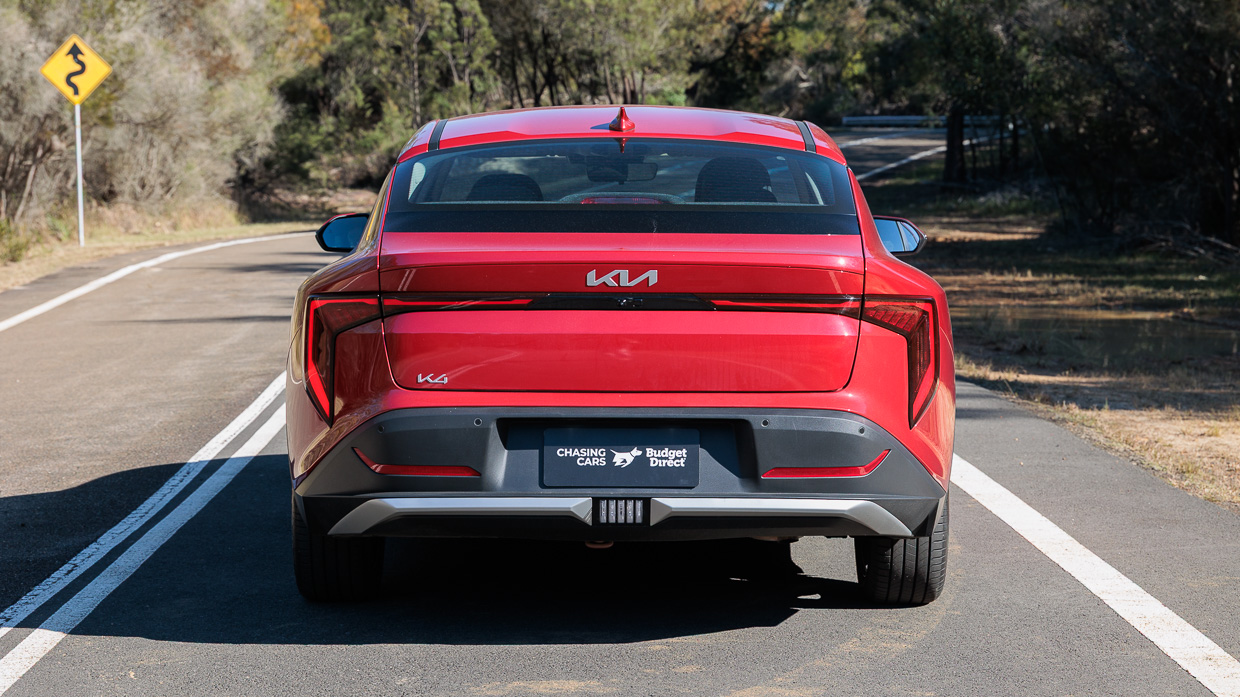
That’s a five grand upcharge over the questionable S ($30,590 list) and three grand over the more sensible S with Safety Pack ($32,690 list)…because why would you opt out of safety, right? Beyond, the Sport+ demands an added $2400 ($37,590 list).
All of the above fit 112kW/192Nm 2.0-litre naturally aspirated petrol power, a six-speed automatic, 280mm/262mm disc brakes and torsion beam rear suspension, with either 16-inch (S) or 17-inch (Sport, Sport+) rolling stock.
The GT-Line ups the mechanical credentials markedly, bringing a 142kW/265Nm turbocharged 1.6L petrol four, eight-speed auto, larger 305mm/284mm brakes, 18-inch wheels and a multi-link rear end. The flagship lists for $42,990.

In a nutshell, the walk-up to Sport brings the dual-12.3-inch screens, sat-nav, and some added active safety (Highway Driving Assist and Lane Change Assist). These lift the Sport nicely out of the poverty pack doldrums.
Meanwhile, the Sport+ above brings faux leather trim, front seat heating, soft-touch door inserts, an auto-dimming mirror and other minor niceties such as solar glass and Aero Blade-type wipers.
These are non-essential if quite decent upgrades for the ‘plus’ version’s $2400 upcharge.
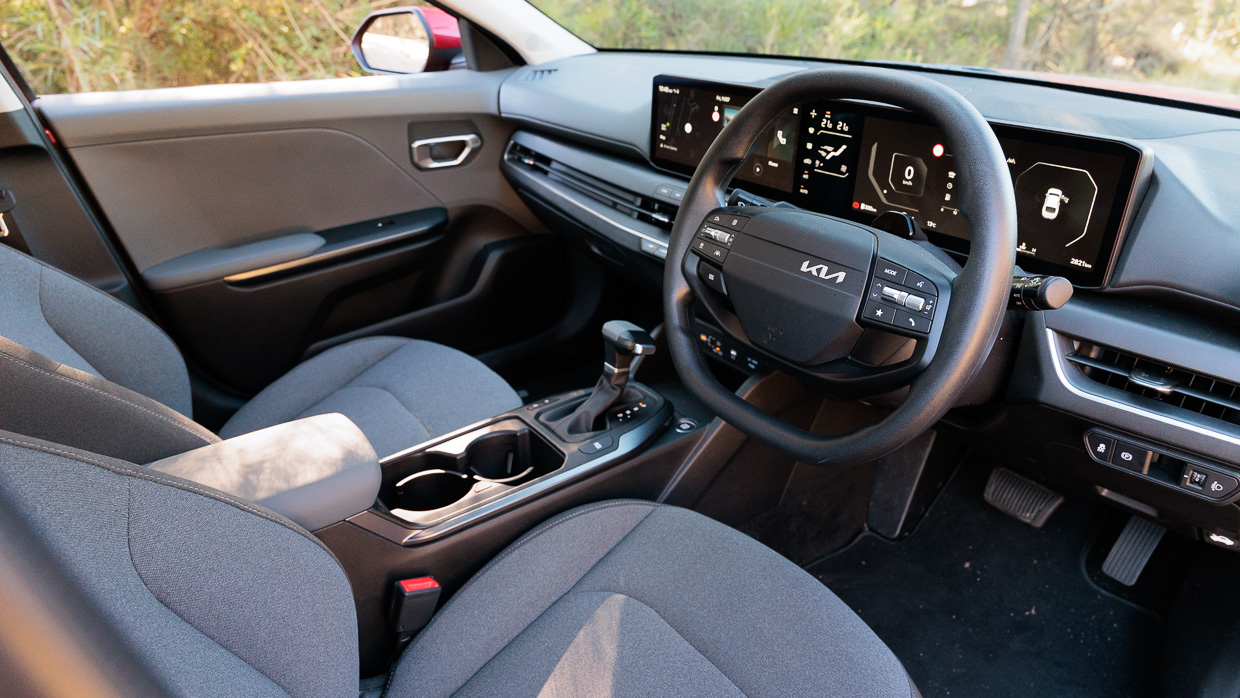
Standard features on the tested mid-grade K4 Sport include:
Intrinsically tied to the drive experience is K4’s size: at over 4.7 metres long (and much like its i30 Sedan cousin) this small sedan would categorically graduate to medium in an era prior to now. Perhaps ‘smedium’ is more apt…?
Its length conspires to impressive boot depth (more below) and, erm, large headlights with a prominent ‘tiger face’, thanks to significant body overhangs beyond its (2720mm) wheelbase.
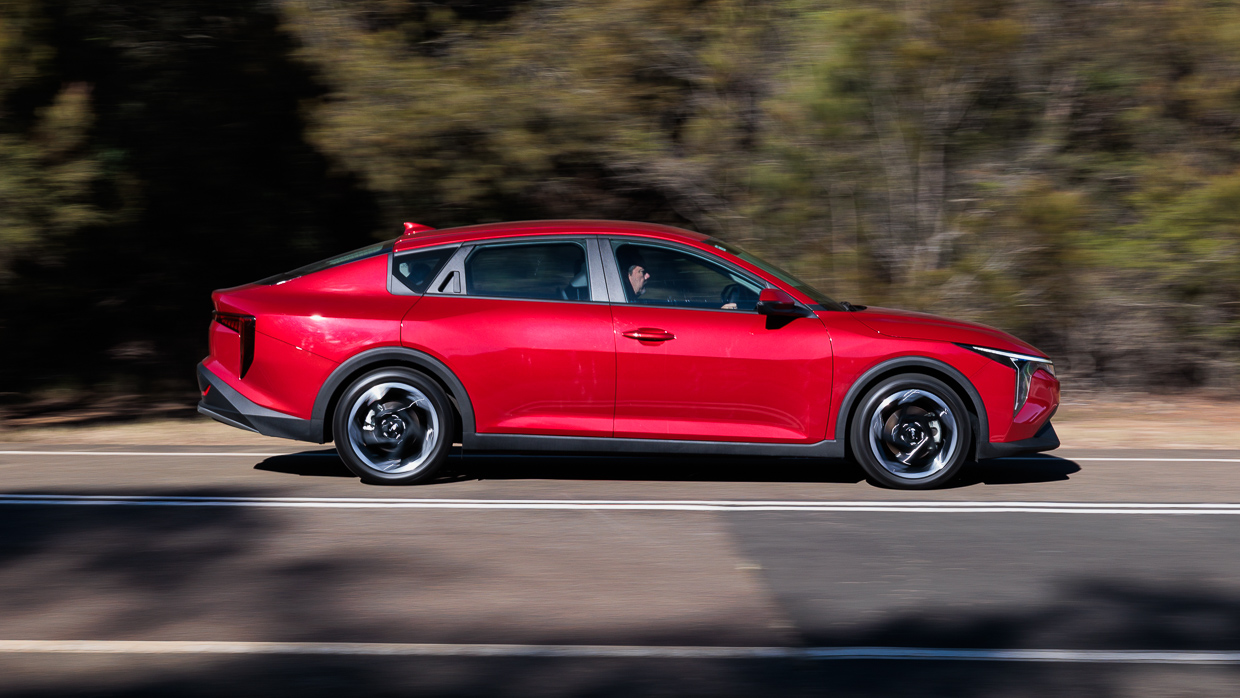
The K4’s is a striking design that draws attention but — highly subjectively — won’t likely win many beauty contests. Its underwhelming 17s don’t do aesthetics any favours, either.
However, at just 1355kg kerb, it’s certifiably small-car light, which does the largely carryover 2.0-litre naturally aspirated ‘MPI’ petrol four favours given that just 112kW and 192Nm (at a lofty 4000rpm) is all that the ageing, Euro 5-certified unit can possibly muster up.
It’s not only shortchanged on output against its 1.6 turbo GT-Line kin, but also the likes of a natural small car competitor in the (circa-$38K) Volkswagen Golf Life, which sports a lustier 110kW/250Nm 1.4-litre turbo four of more contemporary technical DNA.
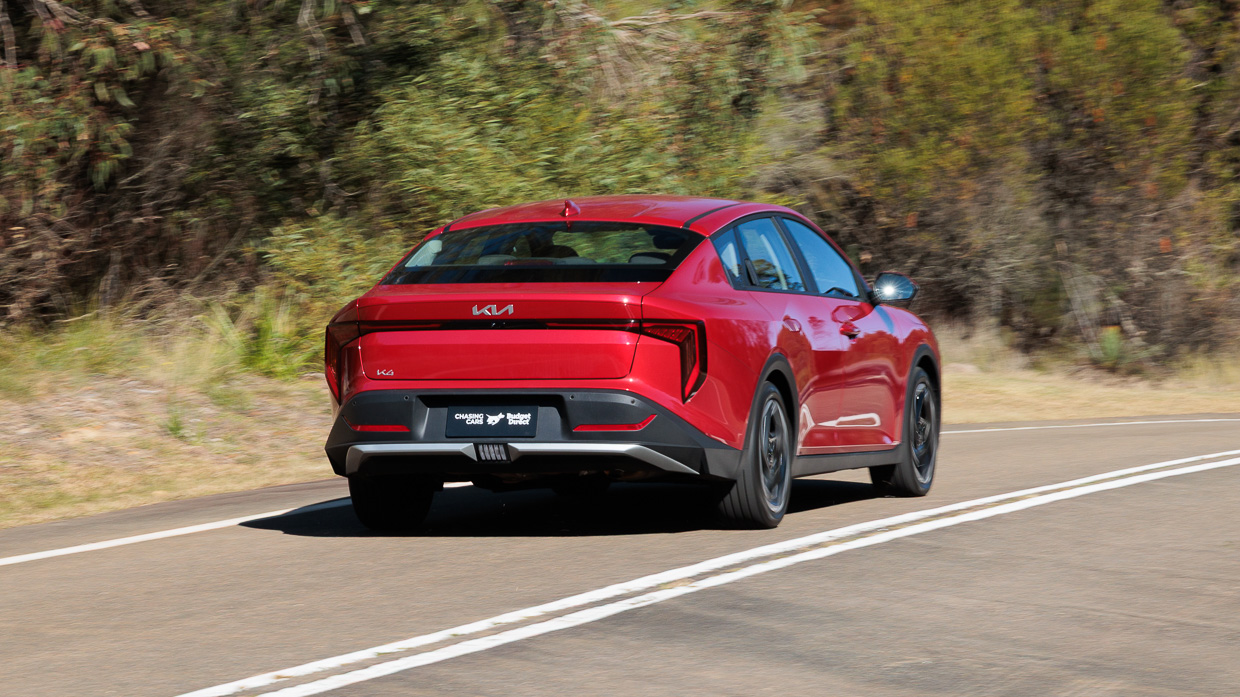
But the 2.0L MPI isn’t a bad unit. Paired with an equally old six-speed torque converter automatic, that stalwart powertrain feels to have benefited from a polish born of sheer time in faithful Cerato service: a smooth operator.
Sure, it’s crisp throttle gives way to a lethargic mid-range if you dig in. And you do have to work it very hard to return any sense of urgency.
But for a good many owners this K4 targets, it’s cooperative — even eager — across balanced driving. Further, its natural aspiration completely sidesteps the throttle lag that can afflict small turbo engines, especially those paired with dual-clutch auto transmissions.
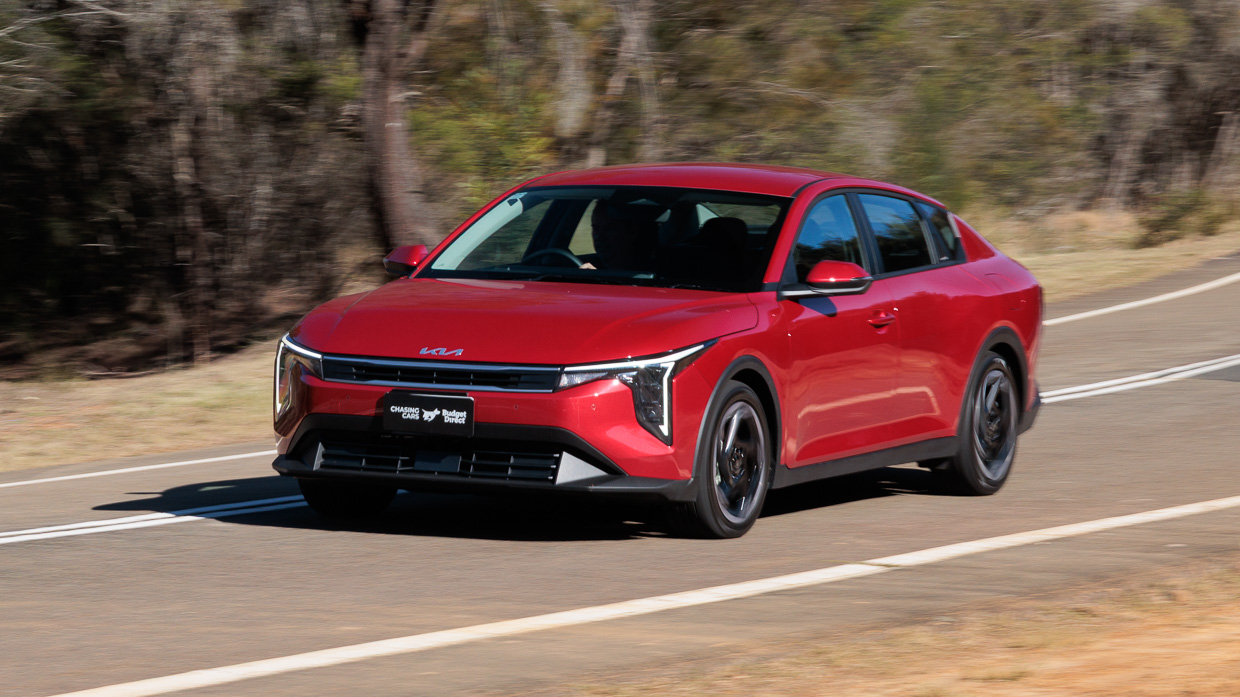
Better resolved is the Kia Australia-tuned ride and handling, which has an accomplished, even-keeled balance. Bump control is good and road acne is filtered out nicely, no doubt with some benefit from those thick-walled 45-series tyres.
As we’ve observed in the past, this torsion beam package seems on evidence to be quieter and more compliant than the multilink format of the flagship GT-Line.
The chassis is also stable and responsive in the corners, returning a crisp and taut nature that’s quite surprising. The steering is nicely weighted and front-end point is decent, though the direction finder becomes slightly aloof tracking in straight line on motorways…if we’re to nitpick.
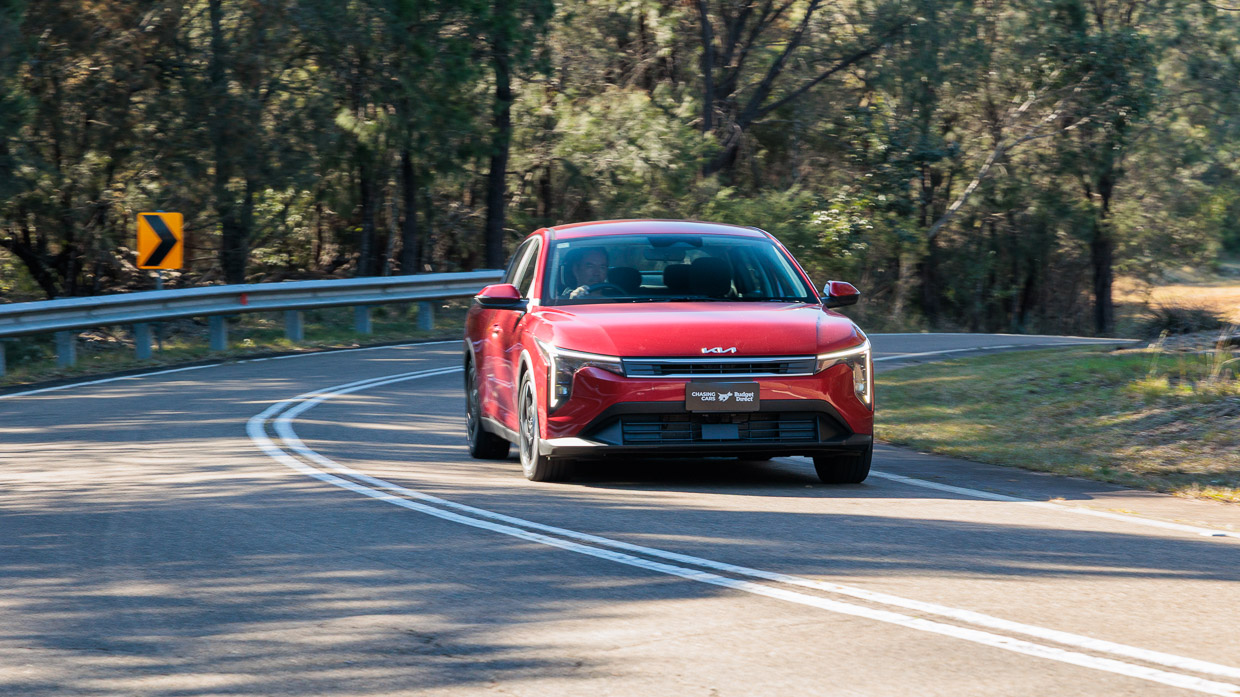
All of this conspires to an around town nature that’s utterly fuss-free — short of ambitious overtaking or urgently exiting a side road into a fast-flowing motorway. When viewed as a relatively buck-banging runabout — or rental car — its manner is certainly above par.
What about 1.6-litre hybrid power, aka i30 Sedan? It’s feasible, but it would take a price-lead value-hinge proposition with clearly a make-do if suffice powertrain and shift K4’s pricing out of where this four-door is clearly positioned. Don’t hold your breath for a petrol-electric fuel sipper version…
As outlined above, the middling Sport grade graduates the features list to dual 12.3-inch digital displays (with 5.0-inch HVAC separator) that, with the novel squirkle-shaped ‘double-D’ multifunction wheel Kia’s so fond of today, conspire to interior presentation that elevates K4 neatly out of a price-busting ambience.
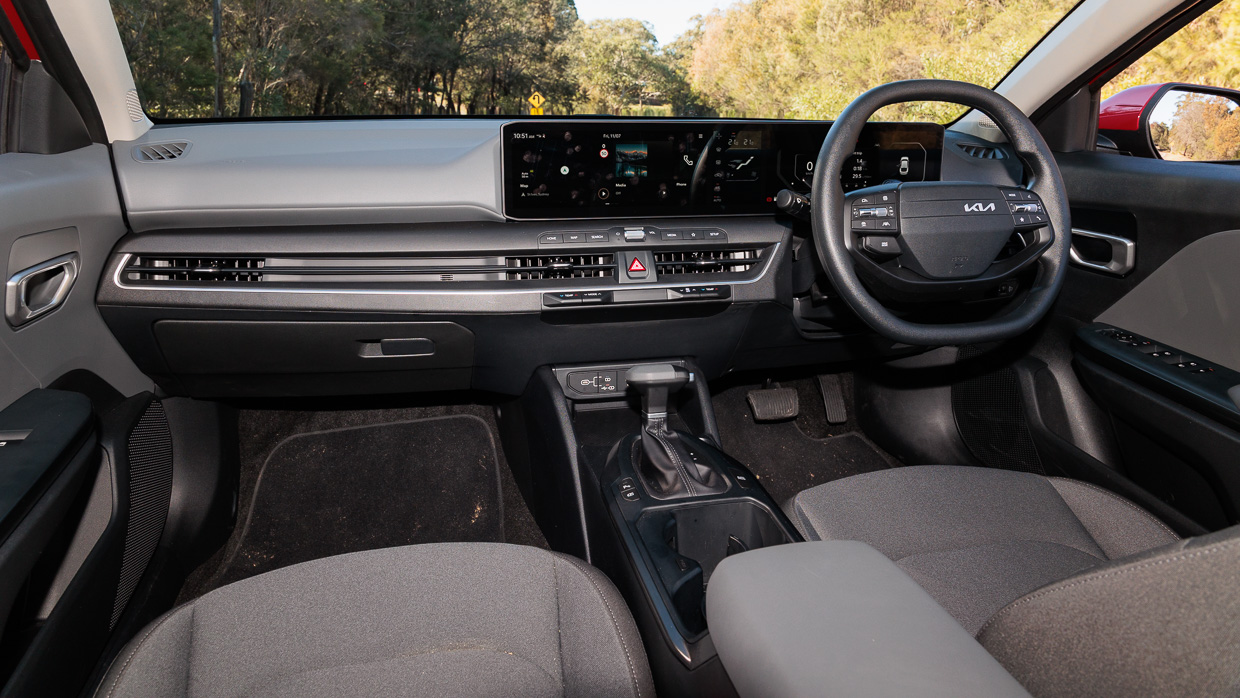
These drawcards anchor a fetchingly contemporary interior design that’s reasonably fresh and straightforward to navigate, a markedly more modern spin than the Cerato it replaces while remaining pleasingly conventional and oddity free.
Still, the whole shebang is minted in quite shiny plastic that’s so hard that one imagines it could double as ballistics-grade armour. The biggest culprits are the door cards — you have to stump up for the Sport+ to add soft-touch inserts.
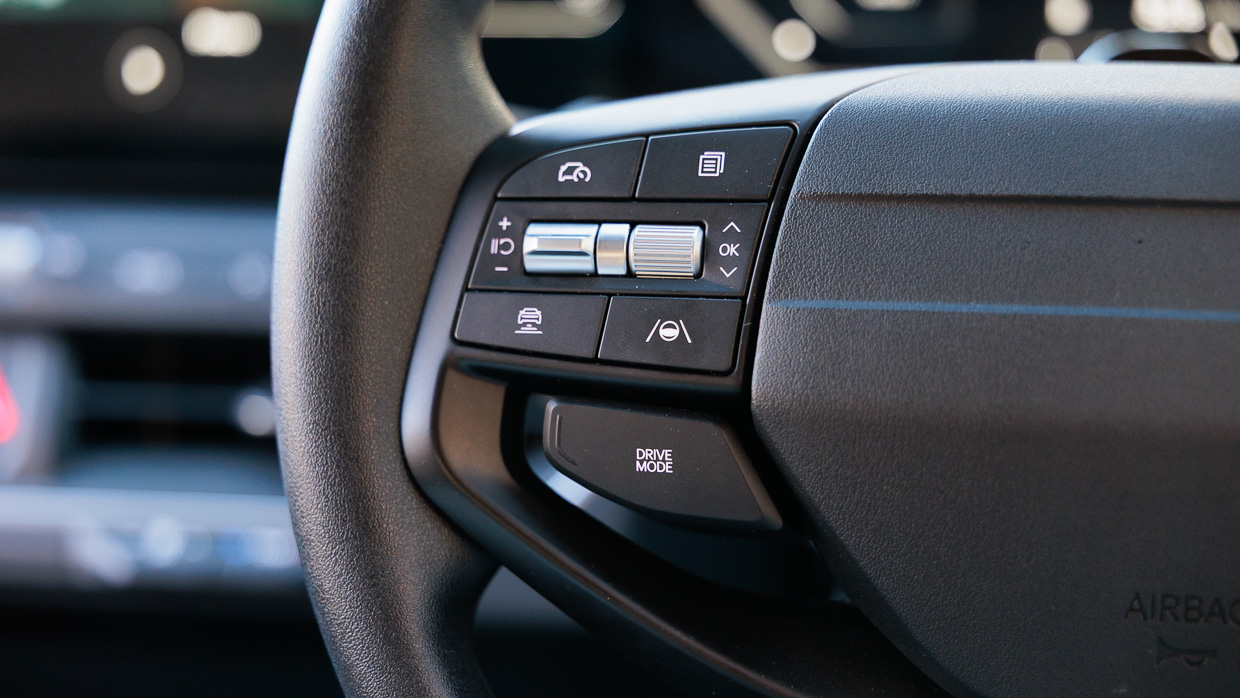
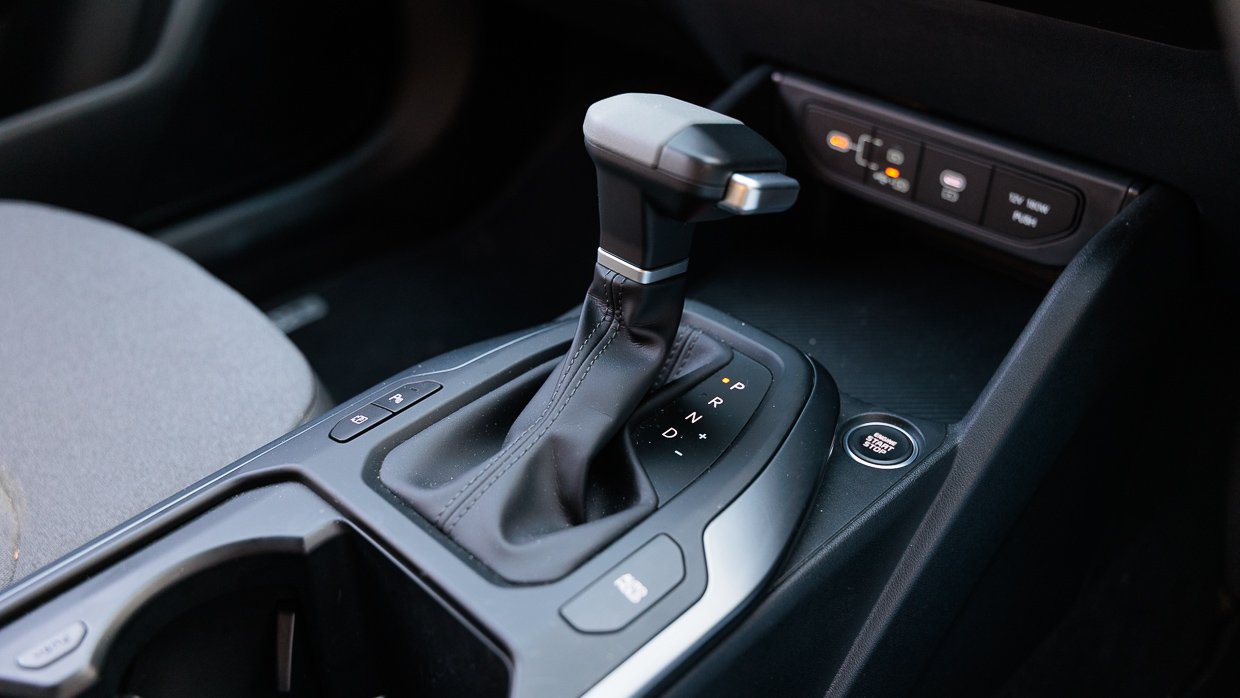
Doing fewer favours is the dour grey-out theme that fails to muster up any sense of celebration, leaving the K4 Sport feeling all too ‘repmobile’ or, of course, fit for the rigours of the rental car ranks. For some added colour relief, you’ll have to stump up for higher K4 variant grades.
The mechanical seats are decent, their cloth trim slightly supple and welcoming, and both the default seat positioning and general ergonomics are sound — sporty, even.
The sheer length of the cabin, too, helps conspire to a nice ambient airiness that feels more midsized than small.
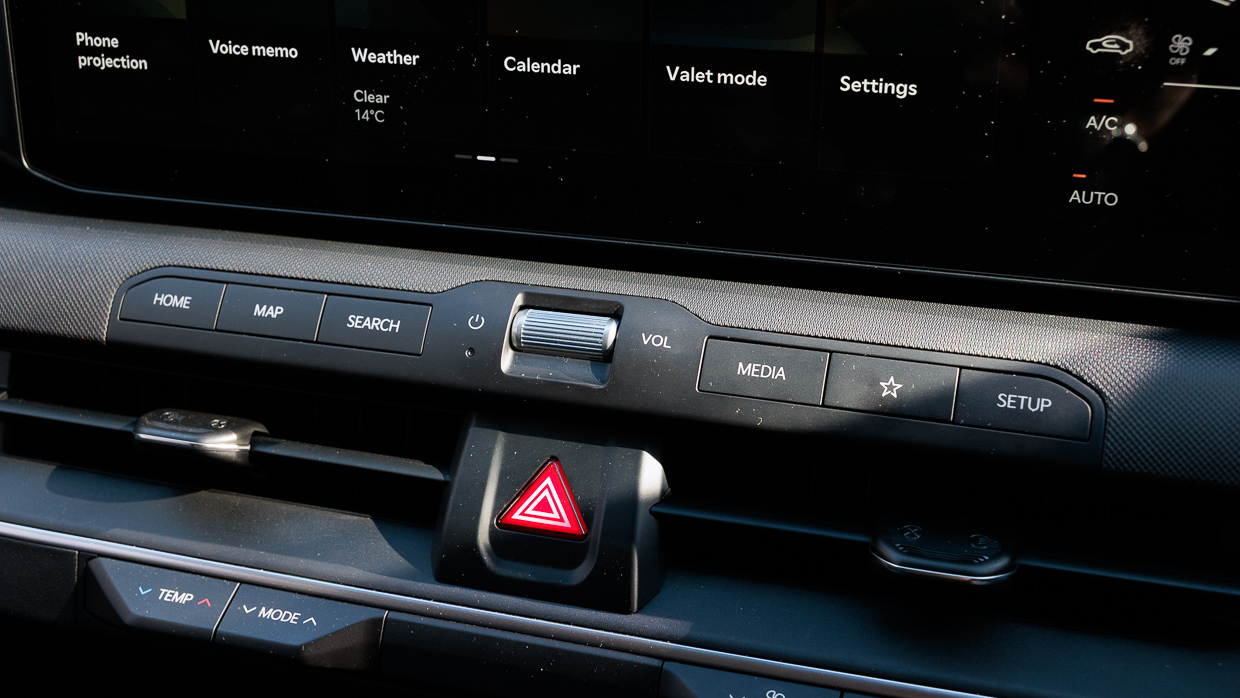
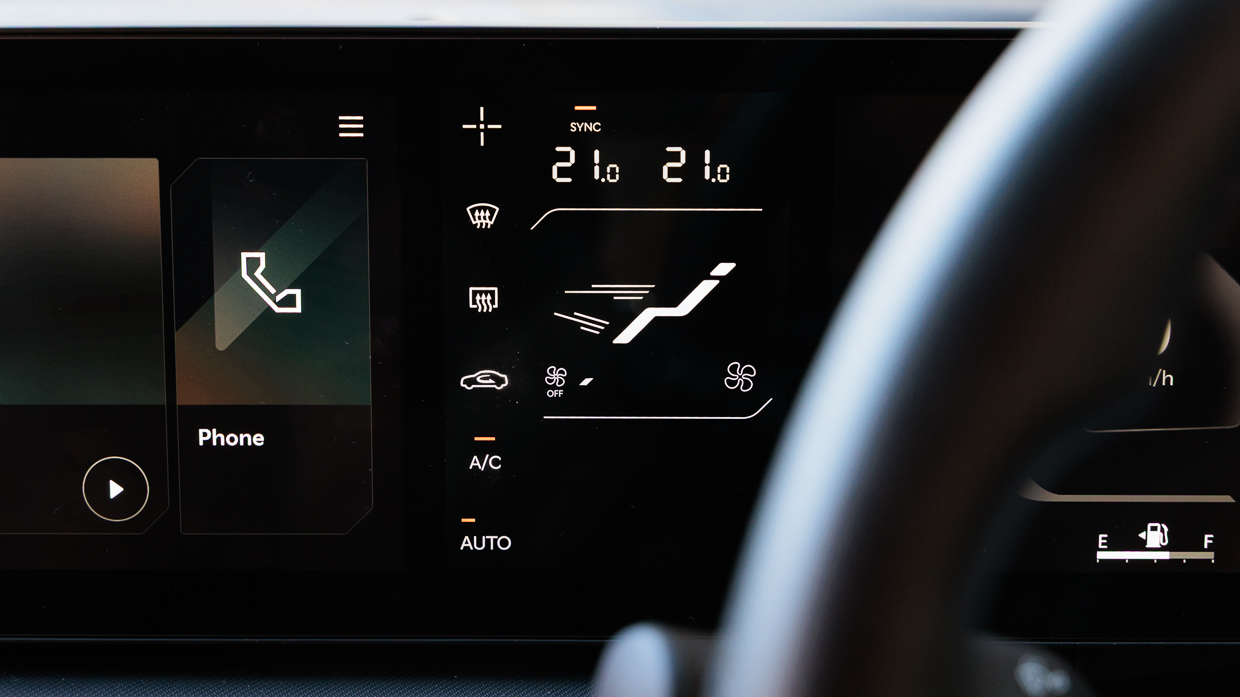
Kia’s cabin designs, evident in most newer models, is migrating to physical switchgear in the centre stack for climate control adjustment, which helps make the cabin feel simple and straightforward.
But the real miss is the phone cubby, another area cast in hard plastic, and the lack of rubber matting will have your phone crashing about loudly through every corner, forcing you to shove phones in cupholders.
There are four USB ports for power, with only the highest-spec GT-Line offering inductive phone charging.
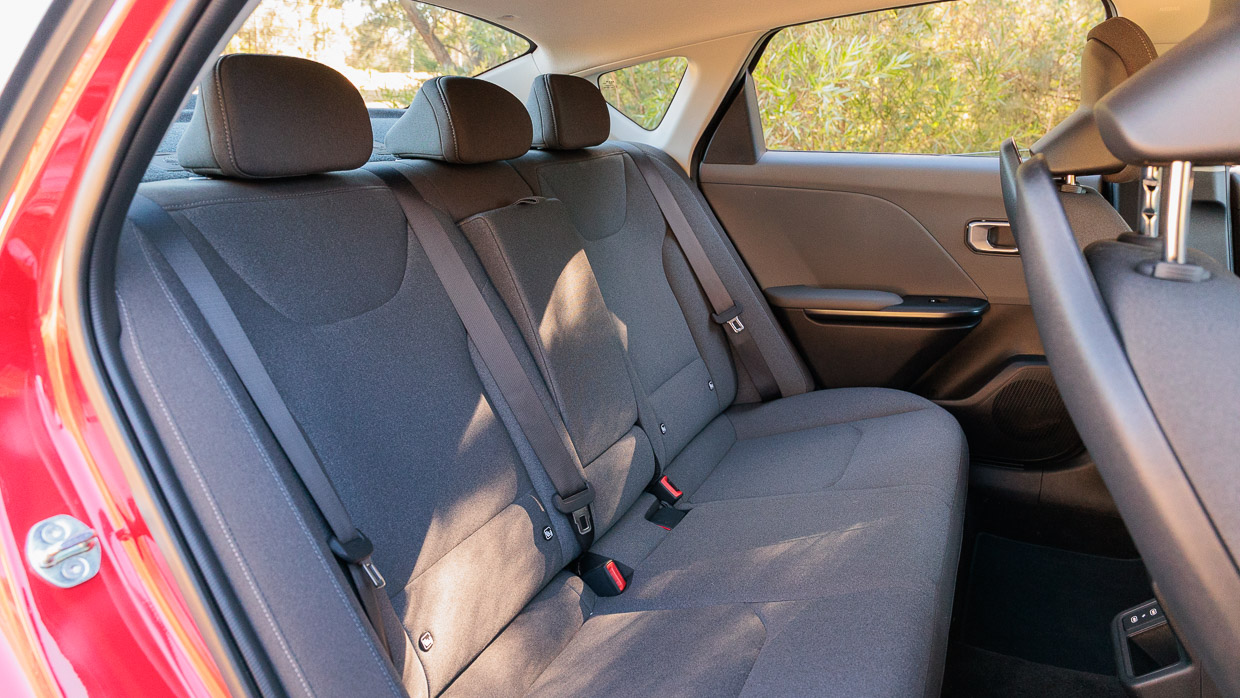
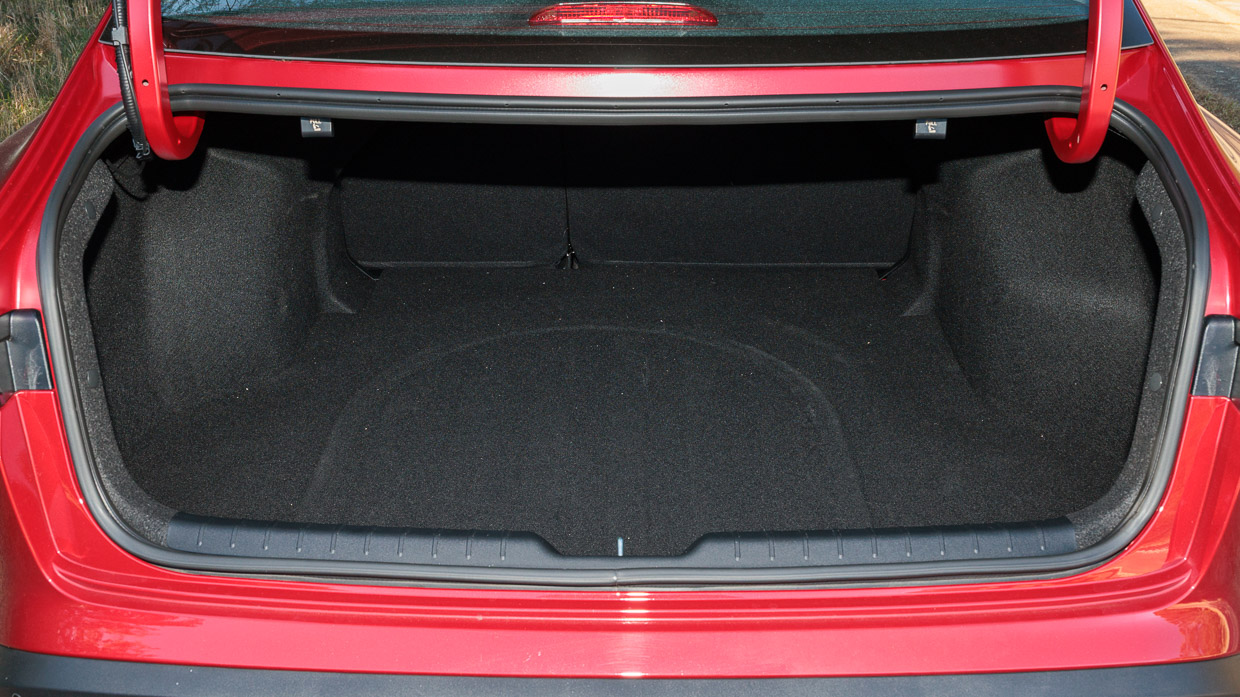
Rear accommodation is very generous — there’s six centimetres of extra kneeroom compared with the old Cerato which, itself, was no slouch for roominess.
Again, it’s the sheer cabin length and medium-like dimensions that makes the K4 arguably a fitter four-adult transporter than a good many small SUV alternatives.
The boot, too, is a handy 508L, with lots of suitcase swallowing depth. While not class leading (hello, Skoda Octavia) the boot is amply spacious for a small-classified four-door and damn sight larger than rivals such as Toyota Corolla Sedan.
The Cerato forebear was a five- (with Safety pack) or four-star (S and Sport variants without Safety pack) ANCAP proposition, though its replacement K4 is yet to be assessed. The most basic K4 S (without Safety pack) is tough to recommend, regardless.
To confuse matters, it’s really the midrange Sport tested here where the full safety suite enters the line-up. Standard features includes:
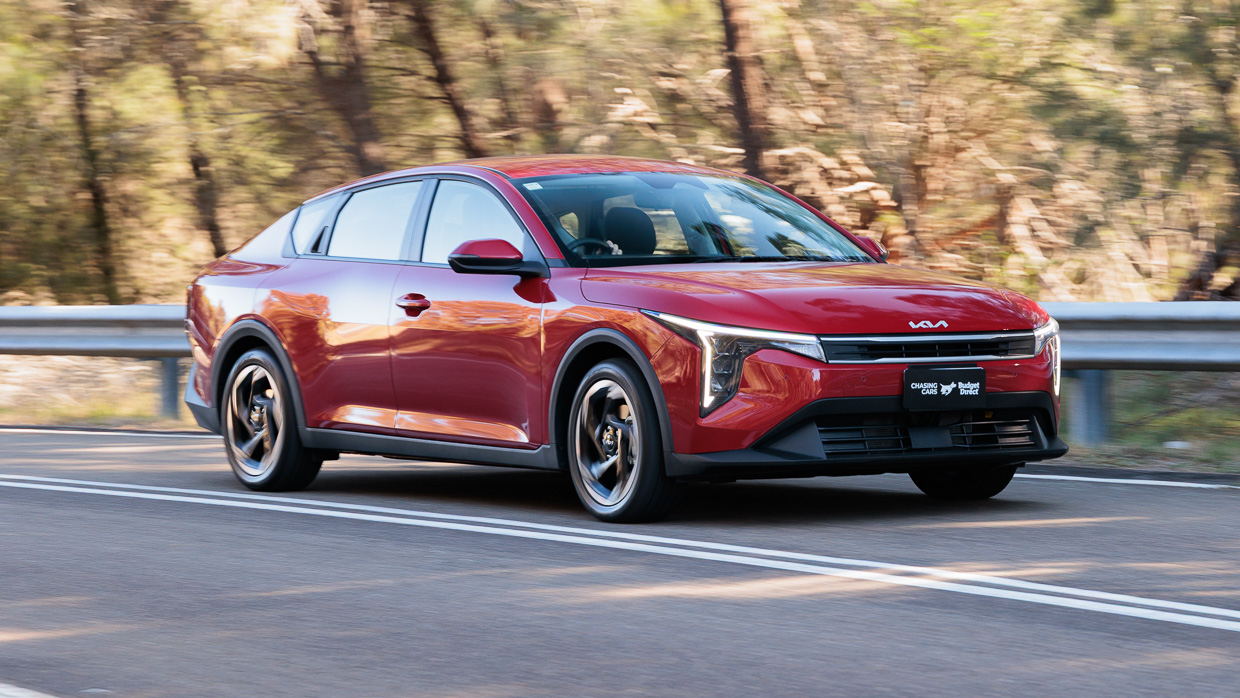
As is now customary with many Kias (and Hyundais), the vehicle arms overspeed warning, active lane keeping and driver monitoring at start-up: the first two of which demand switching off lest they bleat at you incessantly.
However, you’re stuck with the undefeatable driver monitor system, which triggers if you spend more than a nanosecond negotiating the media screen.
On balance, though, the K4 is generally annoyance free. Nor is it prone to false positives or overly sensitive calibrations.
Kia offers a servicing pack for the 2.0L K4s that totals $2269. It covers the first five years and 75,000kms (with 12-month, 15,000km intervals).
This is more favourable than that of the 1.6T GT-Line, which costs a little more outright ($2435) if with shorter 10,000km intervals, so a total of 50,000km of servicing coverage.
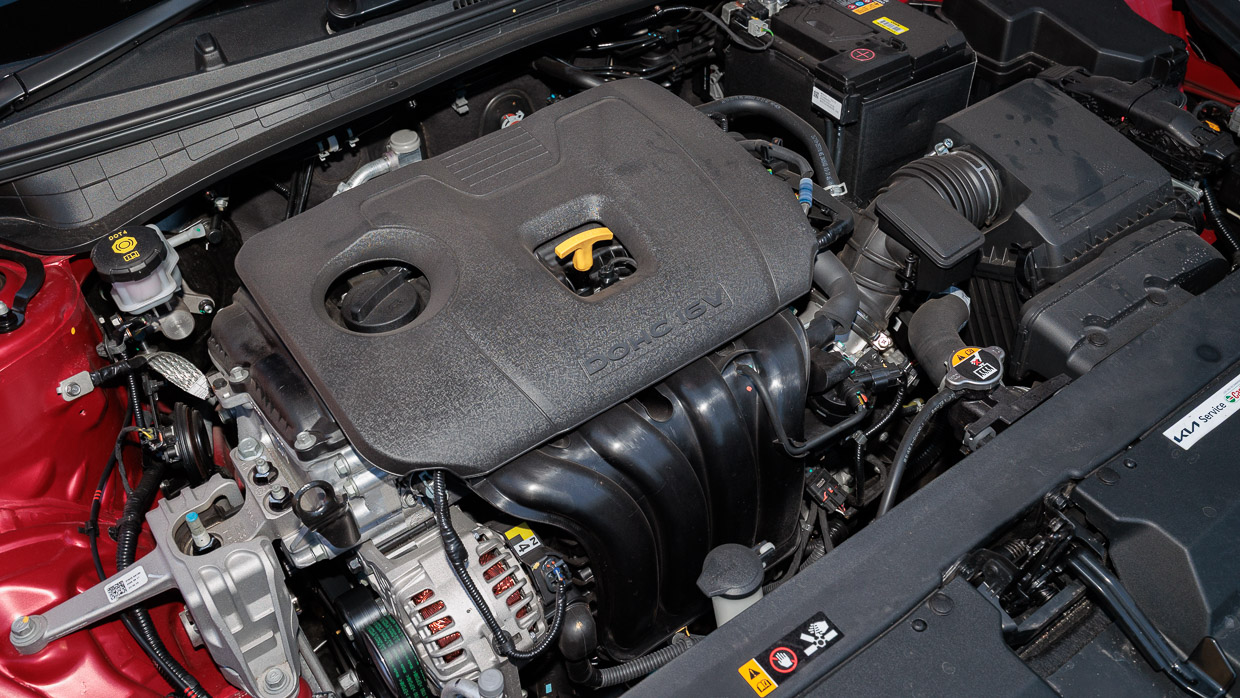
The 2.0L runs happily on cheap 91RON petrol and combined consumption on test was a quite respectable 7.5 to 7.7L/100km band, comparing favourably to the 7.4L/100km ADR rating.
The vehicle is covered by Kia’s very decent seven-year, unlimited-kilometre warranty.
Disclosure: having spotted a squillion K4s and smaller K3 lining rental car ranks on a recent overseas trip, my anticipation of stepping into a mid-range Sport review was curbed. But the daily-driven experience rose substantially above expectations.
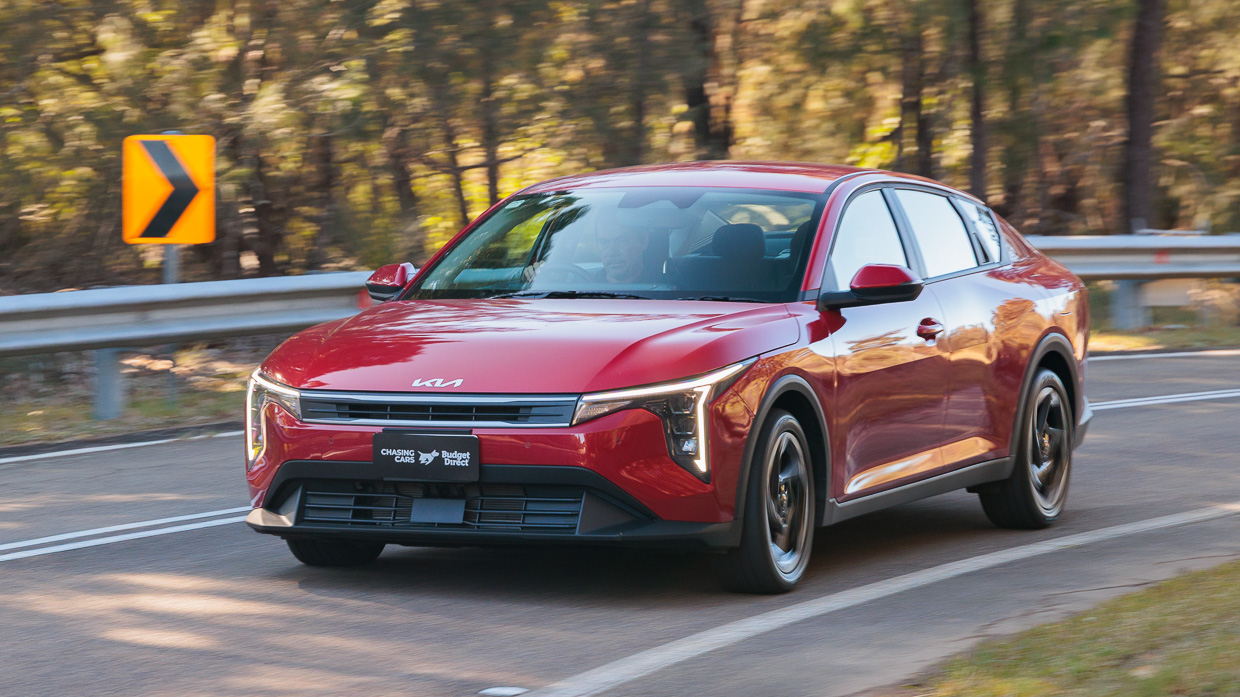
Ostensibly, the K4 is a crook powertrain or a wayward ride/handling blend away from a thorough kicking for which no adventurous styling, big cabin space or swanky dual-digital displays could compensate.
And yet the Sport proved downright decent where it counts most — in the drive — and fits the bill nicely for its price point in most other measures.
Stigma aside, the fact is that hire car companies tend to invest in models that are typically cheap to run and bulletproof reliable. Despite its age and undercooked nature, the 2.0 MPI and six-speed combo not only feels rock solid, the refinement returned from years of polish is a welcome dividend.
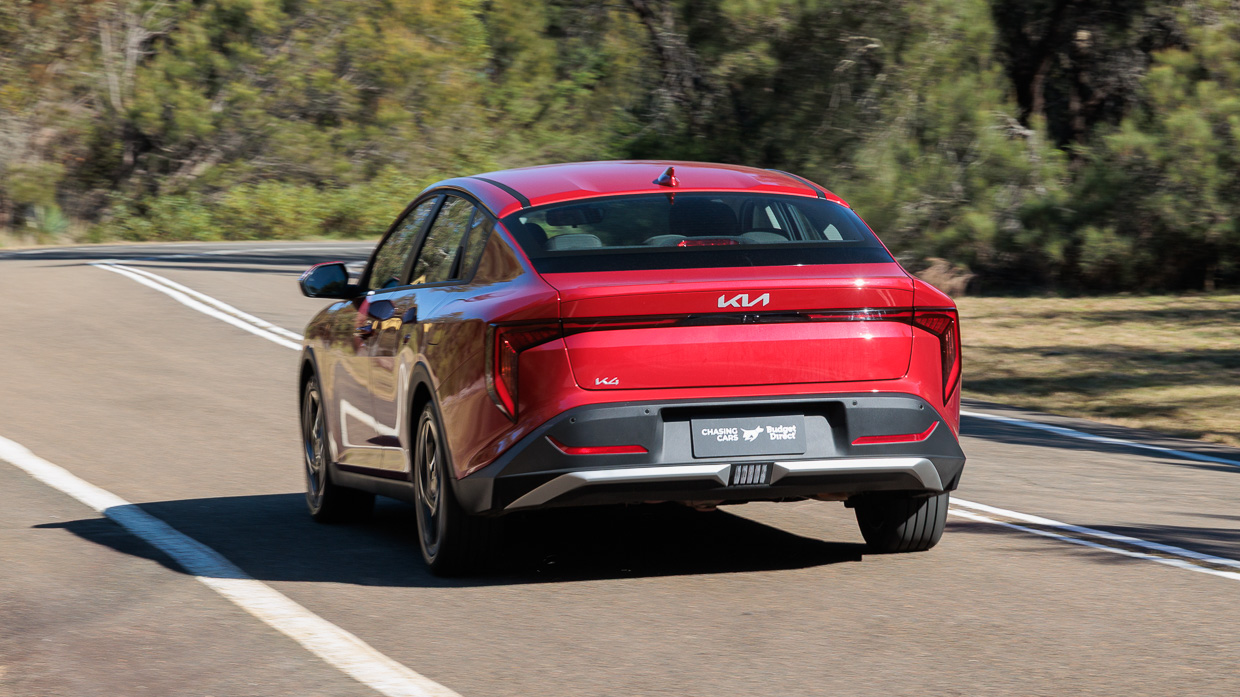
Pair this with a chassis punching well above its thrifty mid-thirties aspirations and you have a car that’s surprisingly enjoyable and encouraging to drive. A lack of sportiness and fanciness is no reason to pan what is a properly resolved offering.
It can be forgiven for not being luxurious or sportiness enough because (despite the Sport name) it’s not trying to be either.
But where it falls a little short is that if buyers do prefer a modicum of sophistication, its i30 Sedan cousin from Hyundai offers very similar if hybrid alternatives for very similar outlay.
Key specs (as tested)
About Chasing cars
Chasing Cars reviews are 100% independent.
Because we are powered by Budget Direct Insurance, we don’t receive advertising or sales revenue from car manufacturers.
We’re truly independent – giving you Australia’s best car reviews.
The estimate provided does not take into account your personal circumstances but is intended to give a general indication of the cost of insurance, in order to obtain a complete quote, please visit www.budgetdirect.com.au. Estimate includes 15%^ online discount.
^Conditions Apply
Budget Direct Insurance arranged by Auto & General Services Pty Ltd ACN 003 617 909(AGS) AFSL 241 411, for and on behalf of the insurer, Auto & General Insurance Company Limited(ABN 42 111 586 353, AFSL 285 571).Because we don’t know your financial needs, we can’t advise you if this insurance will suit you. You should consider your needs and the Product Disclosure Statement before making a decision to buy insurance. Terms and conditions apply.
Indicative quote based on assumptions including postcode , 40 year old male with no offences, licence suspensions or claims in the last 5 years, a NCD Rating 1 and no younger drivers listed. White car, driven up to 10,000kms a year, unfinanced, with no modifications, factory options and/or non-standard accessories, private use only and garaged at night.
^Online Discounts Terms & Conditions
1. Discounts apply to the premium paid for a new Budget Direct Gold Comprehensive Car Insurance, Third Party Property Only or Third Party Property, Fire & Theft Insurance policy initiated online on or after 29 March 2017. Discounts do not apply to optional Roadside Assistance.
2. Discounts do not apply to any renewal offer of insurance.
3. Discounts only apply to the insurance portion of the premium. Discounts are applied before government charges, taxes, levies and fees, including instalment processing fees (as applicable). The full extent of discounts may therefore be impacted.
4. We reserve the right to change the offer without notice.